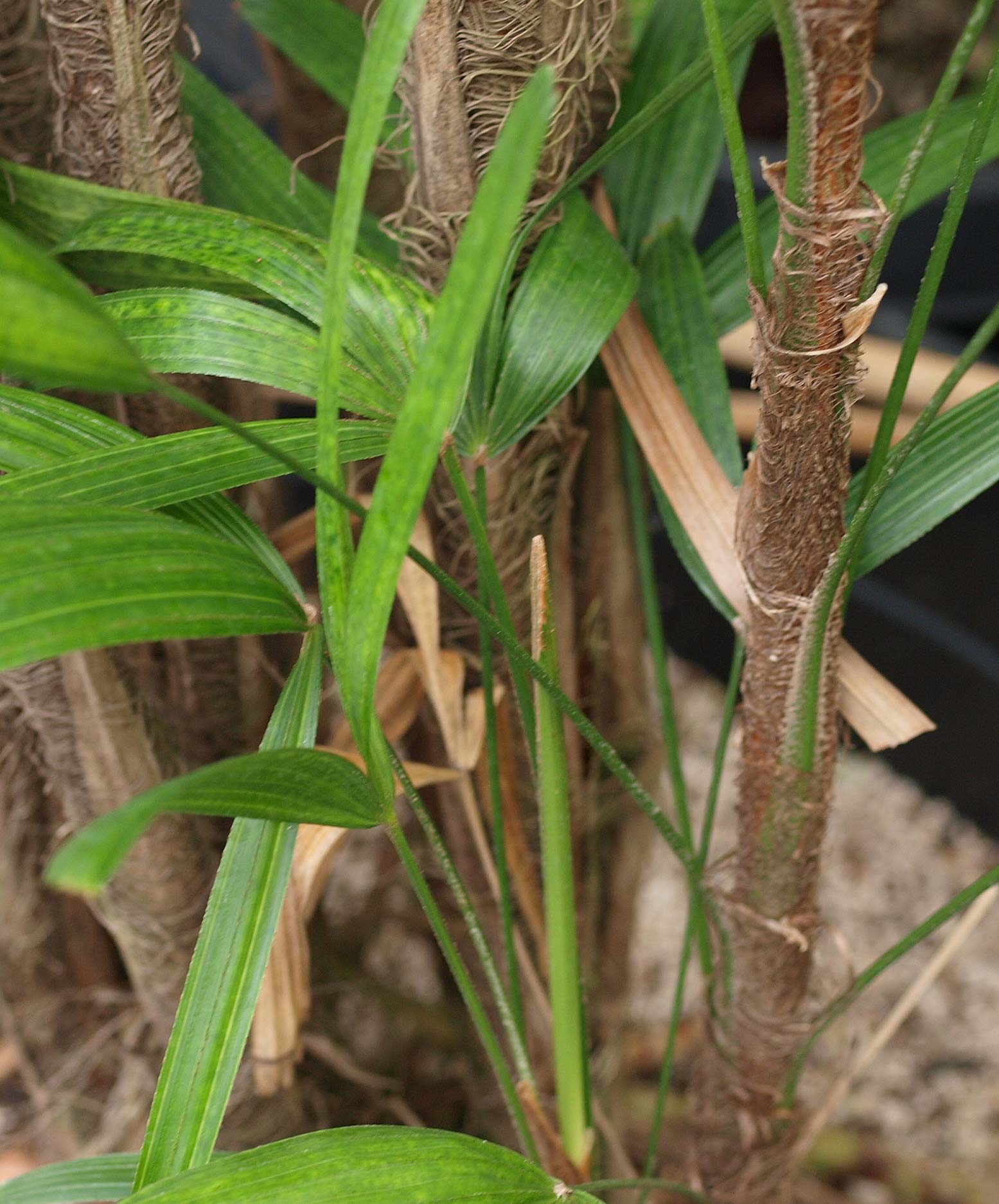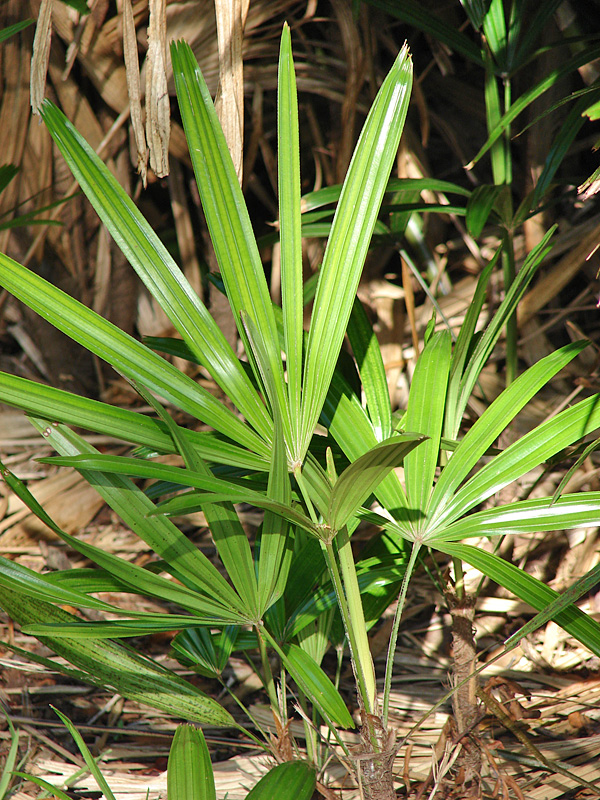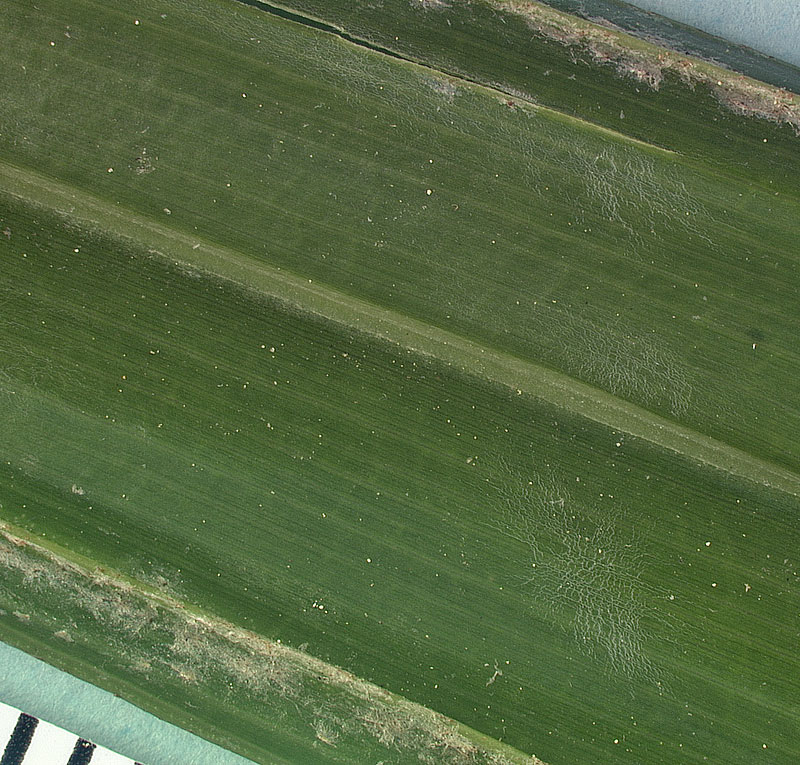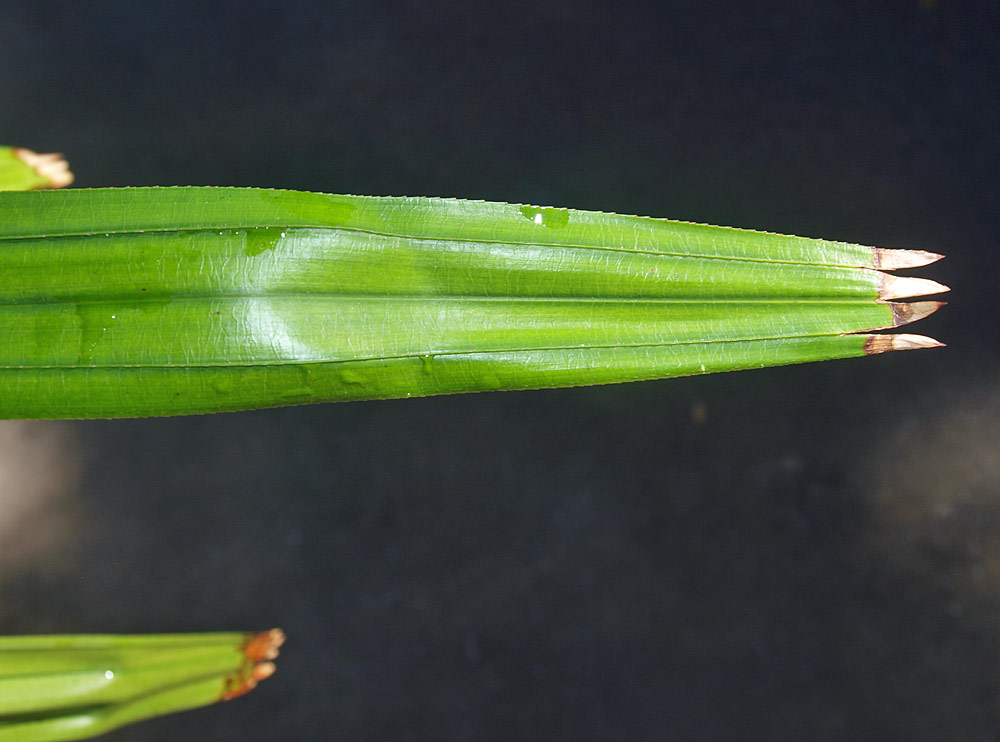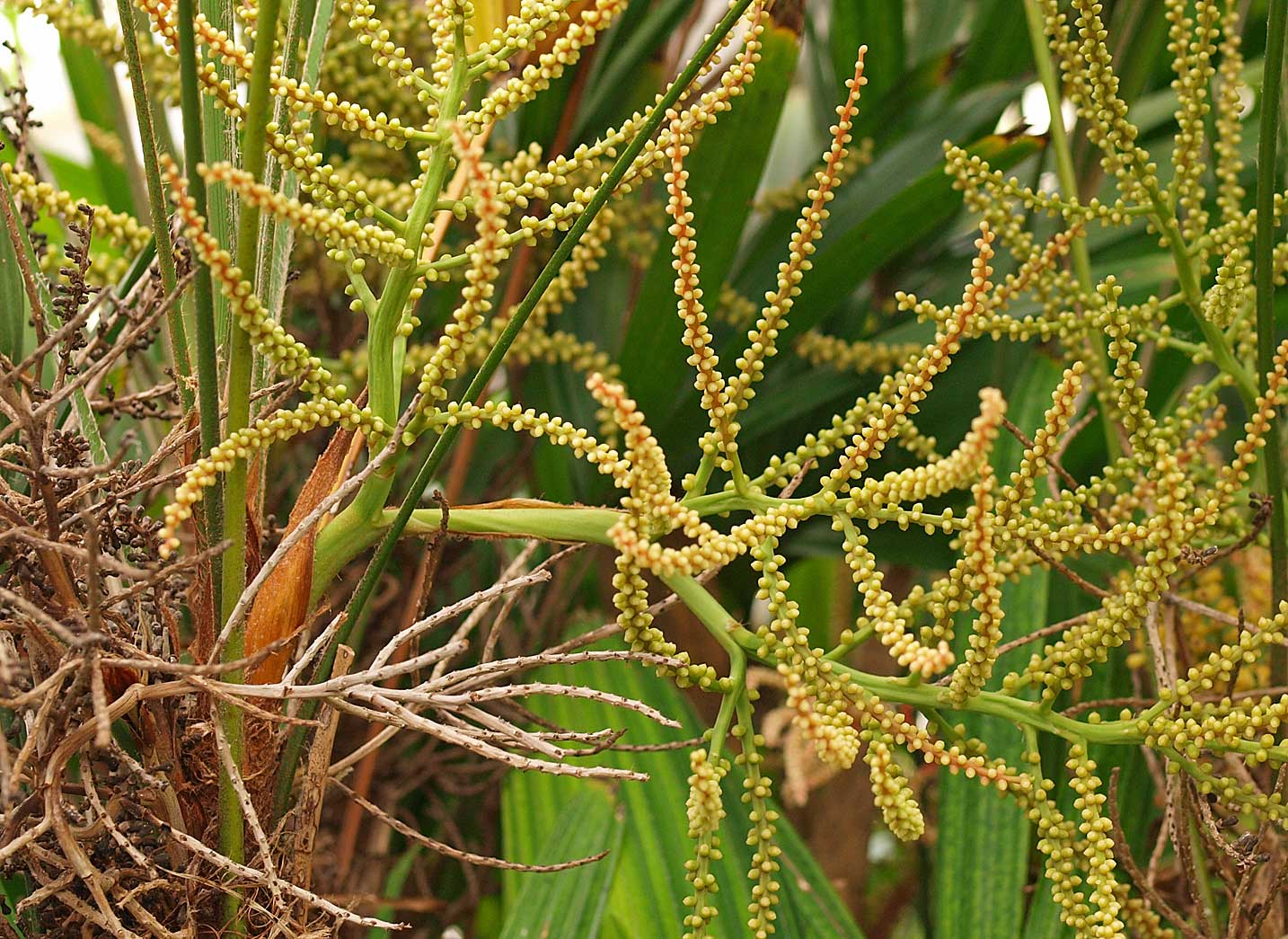Rhapis excelsa
|
Rhapis excelsa habit. Photograph courtesy of Fairchild Tropical Botanical Garden, Guide to Palms http://palmguide.org/index.php |
|
Rhapis excelsa stems with fiber covering |
|
Rhapis excelsa leaves. (Starr Image 080418-4216). Photograph courtesy of Forest & Kim Starr, starrimages@hear.org |
|
Rhapis excelsa adaxial leaf surface |
|
Rhapis excelsa leaf segment abaxial surface with midvein |
|
Rhapis excelsa leaf segment tips |
|
Rhapis excelsa inflorescence |
|
Rhapis excelsa closer view of inflorescence |
Common name
lady palm, miniature fan palm
Description
Stems: Densely clustering, upright, very slender, like reeds or bamboo, to 2.5 m tall and 2.5-5 cm in diameter, covered with fiber and old leafleaf:
in palms -- the leaf blade (which is usually divided into leaflets or leaf segments), the petiole (or leaf stalk) and the sheath (which forms the attachment of the leaf to the stem)
bases, with tan ring scars on older stems. Leaves: Palmatepalmate:
like the palm of a hand; fan palms have palmate leaves that are usually divided into leaf segments arising from a central point, although a fan palm may have entire leaves (e.g., <em>Licuala grandis</em>)
, induplicateinduplicate:
Most palm leaflets or leaf segments are obviously folded. If the folds create a V-shape, with the midrib lower than the margins (so that rain might fall "into a valley"), the folding is induplicate.
, to 75 cm across, with no spines or teeth, and divided from three-fourths to the entire length of the blade by wide, green, multi-ribbed, jagged-tipped segments. The segments split between the folds. Flowers and fruit: Inflorescence inflorescence:
the reproductive structure of a flowering plant, including palms, consisting of flowers and associated bracts
to 30 cm long, with staminatestaminate:
a flower bearing stamens but no pistils; a “male” flower
(branched to three orders) and pistillatepistillate:
a flower bearing a pistil but no stamens; a “female” flower
(branched to one or two orders) on separate plants (bisexual flowers are seen occasionally). The fleshy flowers are white; the ripe fruit is also white or sometimes maroon.
Diagnostic features
Field: Densely clustering, unarmed, upright, very slender stems covered with fibers and old leafleaf:
in palms -- the leaf blade (which is usually divided into leaflets or leaf segments), the petiole (or leaf stalk) and the sheath (which forms the attachment of the leaf to the stem)
bases; palmatepalmate:
like the palm of a hand; fan palms have palmate leaves that are usually divided into leaf segments arising from a central point, although a fan palm may have entire leaves (e.g., <em>Licuala grandis</em>)
leaves with wide, green, multi-ribbed, jagged-tipped segments split between the folds.
May be confused with
Perhaps Serenoa repens or Licuala grandis, but both these palmatepalmate:
like the palm of a hand; fan palms have palmate leaves that are usually divided into leaf segments arising from a central point, although a fan palm may have entire leaves (e.g., <em>Licuala grandis</em>)
leaved species have spines on the petiole, unlike Rhapis excelsa which is unarmed.
Distribution
Native to southern China
Additional comments
This dwarf palm is commonly cultivated as a short hedge or as an indoor ornamental. A variegated leafleaf:
in palms -- the leaf blade (which is usually divided into leaflets or leaf segments), the petiole (or leaf stalk) and the sheath (which forms the attachment of the leaf to the stem)
form is available from time to time.
Scientific name
Rhapis excelsa (Thunb.) Henry
Family
Arecaceae/Palmae
Synonyms
Chamaerops excelsa Thunb.
Rhapis flabelliformis L'Hér. ex Aiton
Trachycarpus excelsus (Thunb.) H. Wendl.



